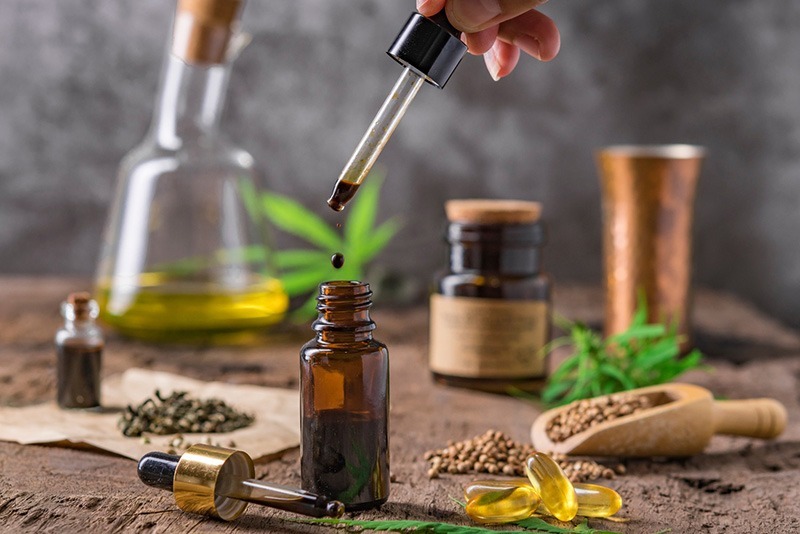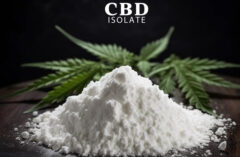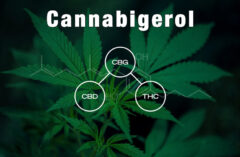Table of Contents
- 1 What does CBD oil taste like?
- 2 What does CBD look like?
- 3 What do we Mean by Spectrum?
- 4 What Influence does the type of CBD have on the Flavor?
- 5 The Compounds that Craft the Complex Flavor Profile of CBD oil
- 6 The Impact of the Environment and Extraction Process on CBD oil’s Taste
- 7 What is the Main Benefit of CBD oil?
- 8 Is CBD good for Mental Health?
- 9 How much CBD should a Beginner start with?
- 10 Should I take CBD in the Morning or at Night?
- 11 What is the Difference between Hemp Oil and CBD Oil?
- 12 Natural and artificial variations
- 13 Not all CBD Oil are created equal
- 14 Curious? Here’s where you can try CBD Oil for yourself
- 15 Further Reading:
Last Updated on April 6, 2023 by Team Spinfuel
CBD, short for Cannabidiol, is a pharmacologically active natural medicine obtained from cannabis. To the CBD Aficionado, there is a lot more to it not this.
Versatility is CBD’s middle name. It has a remarkable adaptability that seamlessly blends with everything from extracts to oil tinctures, soft gels, capsules, skin care products, vapes, and a myriad of other options.
This article takes you on a deep dive into the CBDelicious world of hemp oil, answering the most frequently asked questions about the appearance, benefits, and taste of CBD oil, as well as the compounds responsible for influencing its unique flavor.
What does CBD oil taste like?
Much like a fine wine or a craft beer, there’s no simple answer to what CBD oil tastes like!
But with increasing popularity and accessibility, many people are beginning to wonder what they should expect from their CBD oil taste.
While it’s true that most CBD oils have a mixture of earthy, grassy, floral, and nutty flavors, the taste of CBD oil is far more nuanced than meets the eye.
Pia Carleson, a CBD wellness advocate for Cannabiva, (and a true CBD Aficionado) tells us, “The answer to the question — what does CBD oil taste like — depends on a number of factors, from the terroir, or growing environment, to the extraction method, and so on.”
That’s why you may find your CBD taste bold or sweet, peppery, and even piney. It all comes down to the intricate interplay of plant medicines in your CBD product.
One thing is for sure, the result is a complex and delightful CBD flavor profile that tantalizes your taste buds with its richness and diversity. With enough experience you to can become a CBD Aficionado.
What does CBD look like?
Depending on the extraction method and growing conditions, CBD oil can range in color from clear to a stunning shade of deep amber or green.
For example, full-spectrum CBD oil extracted using CO2 will typically have a clear or slightly amber color, while ethanol-extracted CBD oil may have a darker green color.
What do we Mean by Spectrum?
- Full-spectrum CBD oil has a variety of plant medicines in addition to CBD, including other cannabinoids like THC, terpenes, flavonoids, and polyphenols
- Broad-spectrum CBD oil is similar to full spectrum, but with the THC removed
- CBD isolate is pure CBD with all other compounds removed
What Influence does the type of CBD have on the Flavor?
CBD oil offers a diverse range of flavors based on the specific type of extract you select. For instance:
- Full spectrum CBD oil has a complex and rich flavor profile, containing a diverse array of phytochemical compounds that give it a nutty and earthy taste. This flavor is beloved by many CBD enthusiasts who enjoy the depth and complexity it provides
- Broad-spectrum CBD oils are a milder version of full-spectrum oils and retain most of their taste, thanks to additional filtration and purification processes that remove the psychoactive THC cannabinoid. These oils offer the perfect balance of flavor and purity, making them a popular choice among CBD users
- CBD isolate oil is a colorless, odorless, and virtually flavor-free extract with over 99% purity. It is an excellent choice for those who prefer a neutral taste or want to mix CBD oil with their favorite foods and beverages, without altering their original flavors
The Compounds that Craft the Complex Flavor Profile of CBD oil
Let’s explore the various compounds in CBD oils, and what they can do for the flavor:
Terpenes
Terpenes are organic compounds found in many plants, including cannabis. They’re responsible for the unique aromas and flavors of different strains of cannabis, and they also play a role in the effects of the plant.
CBD oil’s most common terpenes include myrcene, limonene, pinene, caryophyllene, humulene, terpinolene, and ocimene. Each terpene brings something new to your taste buds, ranging from earthy and woody to citrusy and sweet.
Together, they create a symphony of flavors that is both complex and delightful, and challenging to describe with words – other than to say the resulting taste is a magical blend of natural goodness that will leave you wanting more.
Flavonoids
Flavonoids are an antioxidant found in many fruits and vegetables. Often overlooked when it comes to their impact on the taste of CBD oil, these powerful plant compounds contribute significantly to its depth and complexity.
Flavonoids may add a slightly bitter, astringent, or sweet taste to CBD oil, increasing the diversity of its flavors. They are an essential component of the cannabis plant’s overall taste and offer a range of taste experiences that add to the overall enjoyment of consuming CBD oil.
Polyphenols
Polyphenols share a similar molecular structure with flavonoids but add their own dimension to the unique taste of CBD oil. They might impart a sharp, astringent, or bitter aspect that adds to the overall CBD flavor richness.
The degree to which polyphenols enhance the flavor will depend on their ratio and the specific cannabis strain they come from. Dominant polyphenols impact the taste of CBD oil most and include cinnamic acid, caffeic acid, ferulic acid, catechin, and other tannins. Each of these compounds offers its unique flavor profile.
The Impact of the Environment and Extraction Process on CBD oil’s Taste
The growing environment, for example, can affect the flavor and aroma of the plant. If the plant is grown in rich, nutrient-dense soil, it may have a more complex flavor profile than a plant grown in depleted soil.
The harvest time can also make a difference – a plant harvested earlier in its life cycle may have a milder, sweeter flavor, while a plant harvested later may be more pungent and earthy.
The extraction method used to create CBD oil can also have an effect on its flavor. Some methods, like CO2 extraction, are more gentle and can preserve the delicate flavors of the plant. Other methods, like ethanol extraction, may result in a stronger, more robust flavor.
What is the Main Benefit of CBD oil?
Studies show pure CBD can have positive effects on the body, in particular, our endocannabinoid system (ECS). The ECS is responsible for assisting with things like pain, movement, memory, appetite, and more. Taking CBD enhances the way this system functions.
Is CBD good for Mental Health?
CBD is beneficial for common medical and psychological conditions, including depression, anxiety, post-traumatic stress disorder, Alzheimer’s disease, other cognitive disorders, and pain.
How much CBD should a Beginner start with?
While there is no universal dosage of CBD that suits everyone, and the U.S. Food and Drug Administration (FDA) does not provide a specific recommendation on how much CBD one should take, professionals usually suggest taking 1-6 mg of CBD for every 10 lbs of body weight.
Should I take CBD in the Morning or at Night?
It may be necessary to experiment with various approaches until you discover the ideal regimen. CBD is a lipid-soluble compound that can remain in your system for as long as 28 days. Consistency is recommended if you take it daily, as it can accumulate in your body over time, leading to optimal benefits.
The timing of your CBD intake is determined by both internal and external factors. Internally, your body’s response to a consistent routine is critical. Externally, your well-being objectives, such as improving sleep quality, determine when and how much CBD to take.
What is the Difference between Hemp Oil and CBD Oil?
Hemp oil is obtained by cold-pressing the seeds of the hemp plant, creating an omega-rich oil that can be used for various purposes, including skincare and culinary applications. The production process is similar to that of other plant seed oils, resulting in thick, green, viscous, and nutrient-dense oil.
In contrast, CBD oil is made by extracting the CBD compound from the leaves, flowers, and stalks of a cannabis plant, whether it be hemp or marijuana. Various extraction processes such as ethanol or CO2 extraction are employed to create a product that contains more plant compounds, such as cannabinoids and terpenes than hemp oil does.
Natural and artificial variations
The best tasting, highest quality CBD can have a delicate and enjoyable taste on its own, without the need for additional flavors or additives. However, some manufacturers may use natural or artificial flavors to improve the terpene profile or mask the unpleasant taste of low-quality CBD extract.
Additionally, flavoring agents can create stimulating sensations that make the taste of CBD oil more exciting. Popular flavor additives include peppermint and menthol, which create a “wow” sensation.
Natural terpene extracts from fruits such as oranges, strawberries, blueberries, and lemons can enhance the fruity aspects of CBD oil’s taste. Some CBD users may prefer dessert-like flavors such as vanilla and chocolate.
Not all CBD Oil are created equal
It’s important to note that some offerings on the market may contain artificial ingredients that could potentially be harmful. Therefore, it is important to choose a reputable CBD brand that uses natural flavorings if you prefer flavored CBD oil.
Curious? Here’s where you can try CBD Oil for yourself
There’s no doubt about it — with such a wide range of taste experiences to enjoy, consuming CBD oil is a delicious way to enjoy the benefits of nature’s goodness. If you’re in the market for high-quality products, here is our recommendation.
Crafted with only the highest quality USDA organic certified ingredients, Organica Naturals CBD oil is extracted using a cutting-edge subzero ethanol process that ensures maximum potency and purity. With a rich and bold cannabis flavor, it is sure to delight even the most discerning palate.
Further Reading:
CBD Products – 9 Key Considerations When Shopping For Them
Everything You Need to Know About CBD Gummies
How Effective is CBD and What is Mostly Used for?
5 Things You Should Know About Using Prescription-Free CBD Products









